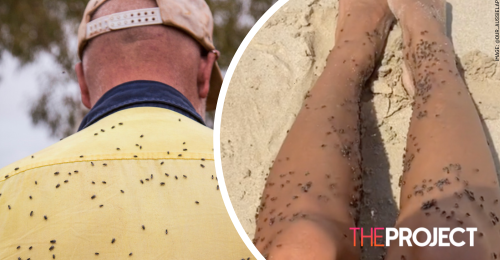So what’s really going on with these swarms of flies descending on parts of the region and just how unusual is it?
TikToks from locals and travellers have gone viral for their depiction of the infestation, leaving many concerned about the severity of the plague.
But the leading fly expert argues that this is quite the norm in WA and not only that, but it’s been far worse in the past.
University of Western Australia professor Theo Evans told news.com.au “People have forgotten just how many flies were around before dung beetles really established and grew into large populations – mostly in the 1980s.”
The bushflies are fond of dung, which is moist and teeming with nutrients and provides the perfect conditions for breeding.
To combat this, CSIRO introduced dung beetles into Australia.
The insects not only eat dung but also bury it, preventing the bushflies from reproducing.
But this year, the hot spring has assisted the breeding process considerably.
“During spring and early summer bushflies may accumulate into large populations by the coast,” Prof Evans explained.
“In WA, this is driven by easterly winds, which blow the bushflies to the coast – similar pattern in the eastern states, but westerly winds. The bushflies avoid flying out over the ocean, so they hug the land,” Evans continued.
“And there is little freshwater, so they target humans – eyes, noses and mouths, for the moisture in tears, mucus and saliva.”
But there is an end in sight. Soon the summer-active dung beetles will be active once again and they’ll bury the dung and we’ll see the population of the bushfly decline significantly.
So maybe that is one species that was introduced and worked out well.
@our_aussielap Why are you like this WA? #westernaustralia #flies #straya #fyp #fypシ #viral ♬ original sound - australianmagpie





























